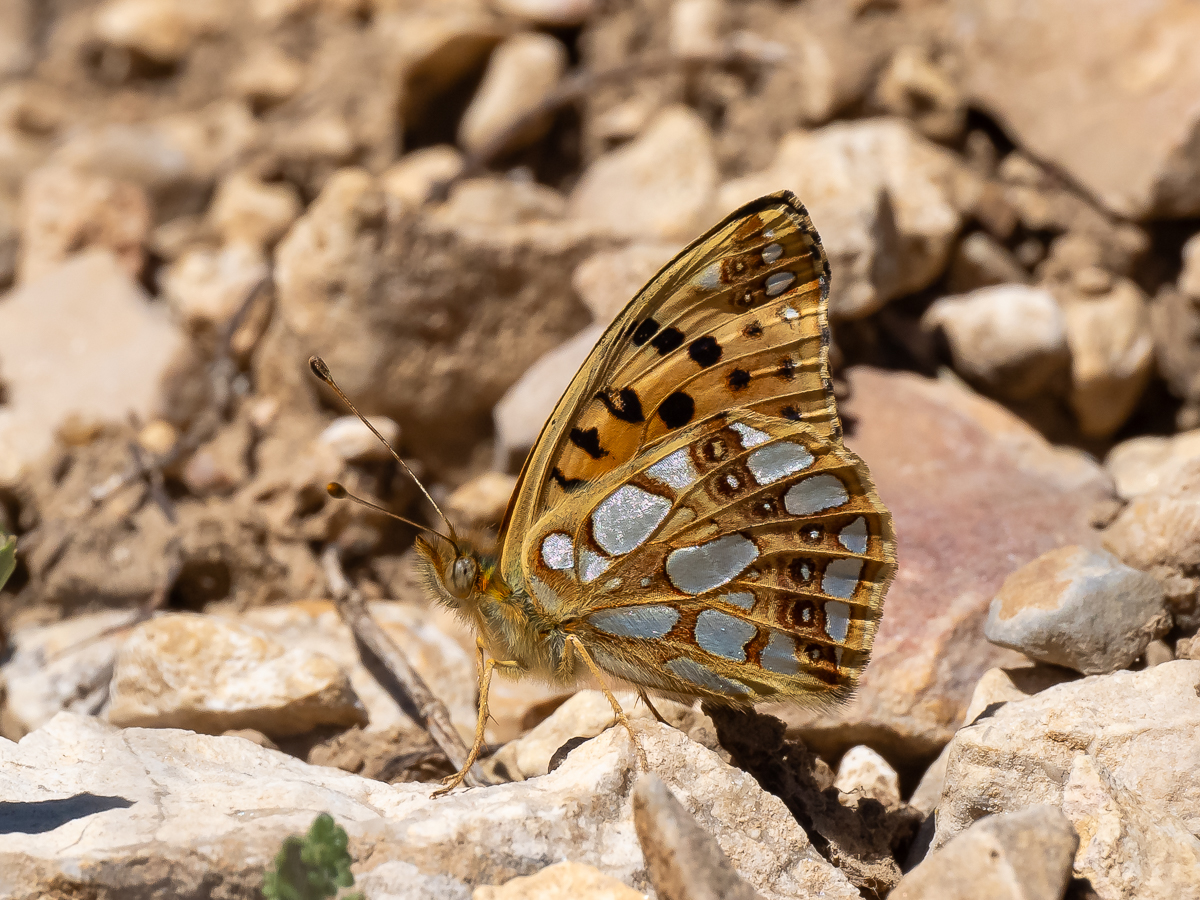
Photo © Peter Eeles
This butterfly is an extremely rare immigrant to the British Isles with the first record from Gamlingay in Cambridgeshire in 1710. It was first noticed in numbers in 1818 and was seen every year until 1885 - with the highest total of 50 records in 1872. Since then, sightings are few and far between with an additional 42 records up until 1939. Between 1943 and 1950 an additional 75 records were added and, since then, there has again been a dearth of sightings with no sightings at all in some years. In 2009 several individuals were seen near the Sussex coast, including a sighting of a mating pair. Even so, there have been less than 400 sightings in total since it was first discovered.
Although females have been seen egg-laying, neither larvae nor pupae have been found in the wild except in the Channel Islands, where larvae were found in 1950, and larvae were again found in 1951 and 1957. However, in 1945, 25 individuals were recorded at Portreath in Cornwall, suggesting that a migrant female had deposited her eggs in the vicinity and that this concentration of adults were her offspring. Unfortunately, this species is unable to survive our winter. The vernacular name of "Queen of Spain" was given in 1775 by Moses Harris in The Aurelian's Pocket Companion, although no explanation for this name was given. This species is a rare migrant to the British Isles. The vast majority of sightings are from the south coast of England, with a fairly even spread from Cornwall to Kent. There are fewer records further north and several records from southern Ireland. It is believed that the presence of this species on our shores is dependent on individuals originating in northern France. Unfortunately, the number seen there is also decreasing due to loss of suitable habitat and this undoubtedly has a knock-on effect.
Description to be completed.
The migrant tendencies of this butterfly mean that it can turn up almost anywhere. However, it is most-frequently encountered in patches of grassland or heathland where it nectars on a variety of flowers, Thistles being a particular favourite. In northern Europe, sites are typically hot and dry.
Description to be completed.
Description to be completed.
Description to be completed.